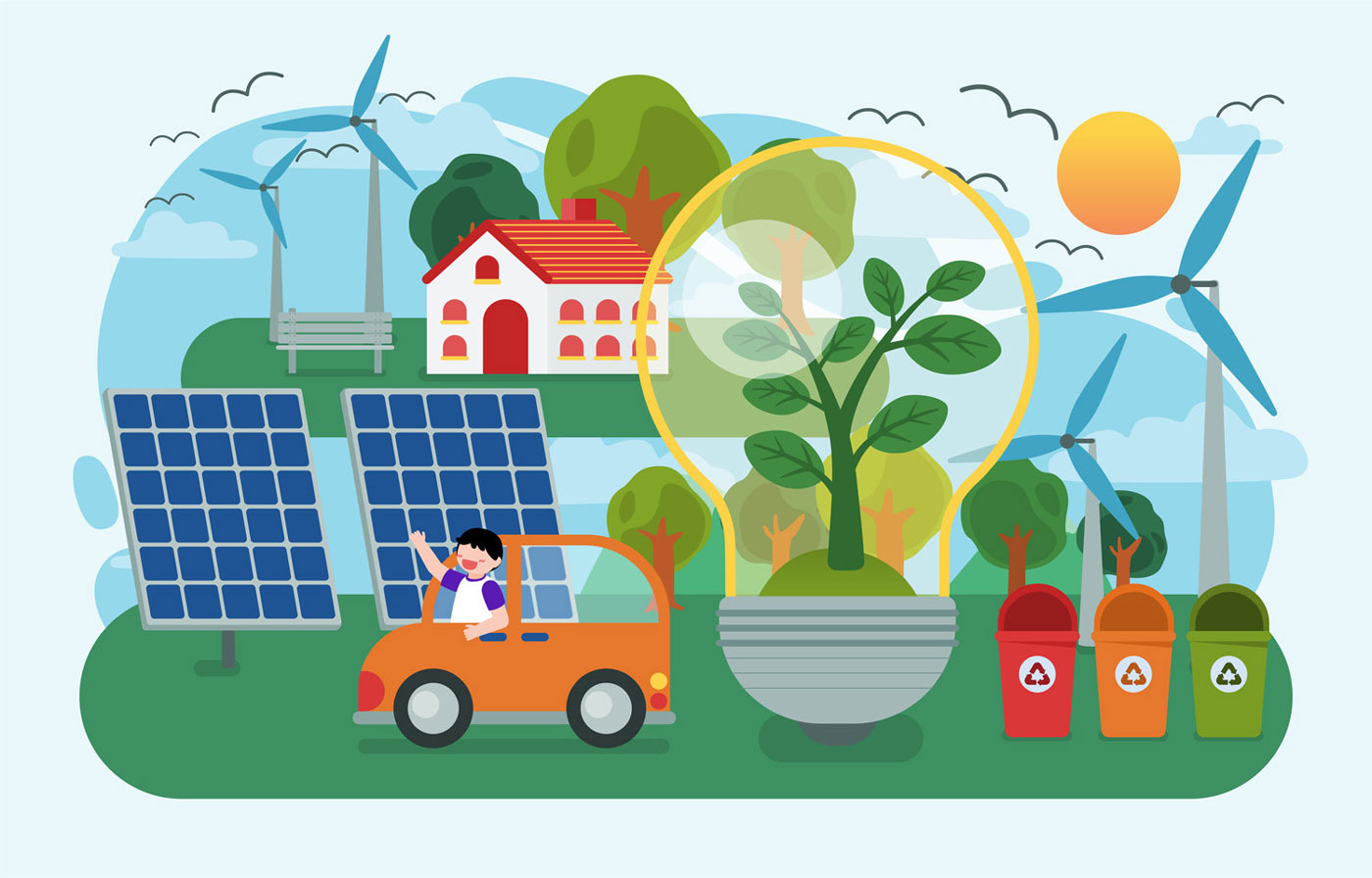Clean energy, also known as sustainable or green energy, is produced from inexhaustible energy sources. For example, hydroelectric, wind, solar energy, and biomass are clean energy sources and are commonly referred to as energy sources with no or minimal environmental impact. Clean energy is environmentally friendly and contributes far less to climate change than gray energy. This form of energy releases very few (if any) harmful substances during production. Clean energy is also known as green electricity. Additionally, clean energy is crucial for sustainability, as fossil fuels are sources that pollute air, water, and biodiversity, leading to climate change. Furthermore, fossil fuels are exhaustible. On the other hand, clean energy sources like the sun and wind are not only environmentally beneficial but also easy to produce.
Clean Energy Sources
Renewable energy sources are also clean energy sources, and wind, solar, water, and geothermal energy are ideal examples of such energy sources. They are never depleted, do not cause air pollution, and have no CO2 emissions. While burning coal, oil, and gas significantly contributes to climate change, clean energy sources do not have adverse effects threatening life. Besides solar, wind, and geothermal energy, there are many other clean energy sources. Let’s explore environmentally friendly energy sources that can be alternatives to fossil fuels.
Solar Energy
The sun is an inexhaustible clean energy source. Through solar panels or rooftop solar water heaters, you can utilize the sun’s energy without additional facilities or expenses. Solar panels convert sunlight into electrical voltage and then electricity. Solar panels are ideal for the climate as they produce much less CO2 than fossil fuels during electricity generation. CO2 emissions occur only during the manufacturing and disposal of the panels.
Wind Energy
Wind energy is clean and comes from an inexhaustible source. Its CO2 emissions are 50 times lower than gray electricity. Wind turbines generate electricity without polluting the air, burdening the climate, or consuming raw materials. Some CO2 is emitted during the construction, maintenance, and dismantling of turbines, but within 3 to 6 months of operation, a turbine already saves an equivalent amount of CO2 emissions.
Windmills
Windmills can be built on both small and large scales, making them suitable for individual use as a type of green energy. For instance, by installing a small windmill on your roof, you can generate your electricity just like with solar panels. Small windmills, as one of the clean energy sources, are ideal for the environment.
Biomass
Due to climate change, renewable energy sources like solar, wind, and geothermal energy are essential. Biomass, one of the clean energy sources, is a renewable resource. Biomass refers to any material used in various forms, from food to construction materials. Energy can be produced by burning, fermenting, or gasifying biomass. After harvesting, plants and forests are allowed to grow again and are then harvested again. This way, biomass energy can always be available. CO2 emissions from burning biomass are absorbed over time by growing plants or regenerating forests. Biomass is considered a key energy source for achieving short-term climate goals.
Green Gas
To limit climate change, we must bid farewell to fossil energy sources like natural gas. Although referred to as gas, green gas is a more sustainable alternative since it does not use fossil fuels. This gas is made from biogas derived from the fermentation of vegetable, fruit, and garden waste, as well as manure. To produce green gas, biogas is first required. Biogas is made by converting biomass, which is of animal or plant origin, into gas. The resulting biogas is then purified and upgraded to produce green gas. Green gas has the same properties and quality as natural gas.
Nuclear Energy
Nuclear energy refers to electricity generation from uranium. However, nuclear energy production emits approximately the same amount of CO2 as wind or solar energy. But uranium is also a limited resource.
Geothermal Heat
Heat from underground is a sustainable form of energy. For geothermal heat, drilling is required to depths ranging from hundreds of meters to several kilometers. Hot water is pumped from these depths. Depending on the temperature, this heat can be used for heating or electricity generation.
All these energy sources are preferred to avoid fossil fuels and limit CO2 emissions. For example, electric scooters are vehicles that support green energy consumption. They do not operate on fossil fuels like cars and have very low CO2 emissions. Since they have no pollutants during use, they are extremely eco-friendly transportation options. By increasing your clean energy use, you can contribute to sustainability. You can produce your electricity with solar panels and utilize electric scooters through the BinBin app.






